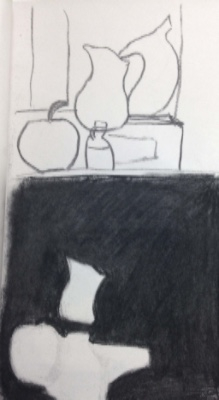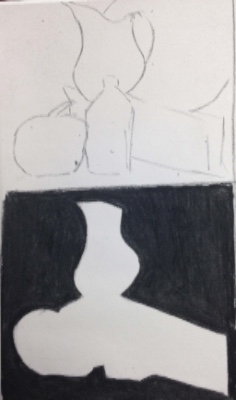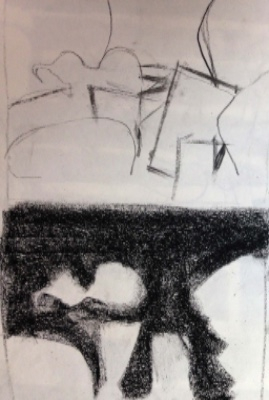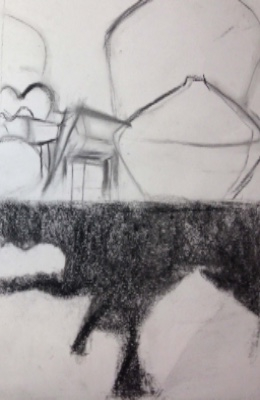The painter Edouard Manet, once observed: "There are no lines in nature, only areas of color (value), one against another."
Drawing shapes is easier than drawing things. The more we stay in the language of shapes, the more our drawings resemble the reality of the things we have observed. When you learn how to see things in terms of shapes, it doesn't really matter what you draw -- you can draw anything well: people, buildings, landscapes, because all are treated equally.
A selection of drawings
The drawings below are from class on Wednesday. Working from a simple still life, student's observed value relationships rather than drawing objects, and grouped them into shapes according to their lightness and darkness,
To simplify the subject's many values, student's first grouped the values they observed into two groups-- black or white. Being limited to 2 values helps you see that value shapes are an important part of clarifying and organizing what you see.
My student's first drew a simple contour drawing of the still life. Next they grouped all the observed values into two divisions-- white and black.
Next they drew from the same subject using a 3 value grouping-- white representing the lightest third of the values in the sill life; a middle tone to represent the darker tones and the darkest values using black.
Honore Daumier-- How many values do you see?
This drawing has been attributed to Caravaggio. Observe how he simplifies and groups the figures and background using 3 values.







